How
to
Repot Rootbound Plants
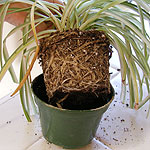
Introduction
Congratulations! You have a very happy plant. How do you know? You
know, because it has literaly grown right out of its container! This is
a good thing and a bad thing. It's good because you know what
conditions your plant loves, but now you need to do something about it.
No biggie. Repotting a plant is fast and easy and it's interesting to
see how large you can eventually grow something.
I have a Ficus plant that is now over 5 feet tall, and still growing,
that I started from a 1/4 inch (.635 cm) pot! This process takes about
30 mintues from start to clean up, so you'll be done in no time at all.
1. Signs of a Rootbound Plant
The pot has been filled with roots and there is very little soil left
Because there is very little soil left when you water, it goes right
through and drains out, nothing is retained
The plant wilts within a day or two of watering, because with very
little soil, no moisture is retained
The roots are growing out of the drainage holes
The roots are cracking the pot
The plant is top heavy or way too big for the size of the container
To determine the above, sometimes you will need to gently pop the plant
out of its container and take a look at the roots.
2. Moving Plant Into Bigger ContainerI
like to move the plant into a bigger container, because I like to grow
my houseplants big, but if you are tight on space, you might want to
just root prune it, and plant it back into its original container. TopHere's a step by step with pictures.
1.
To repot your
plant into a bigger container, choose a new pot that is only about 1 or
2 inches larger in diameter than the old one. You don't want to get too
big a container, because the pot will hold more soil and more water
than the plant can use, which can lead to rot.
Also make sure to
water your plant well a few hours before repotting so it has plenty of
moisture to help it withstand loosing some of its roots  |
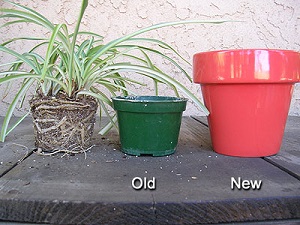 |
2.
Take
the plant out of its pot, knock off the old soil, if there is any, and
tease out the roots and unwind circling roots and cut off any that look
rotted or that need to be pruned back.
If the plant is totally root-bound, make cuts from the top to the bottom of the root ball   | 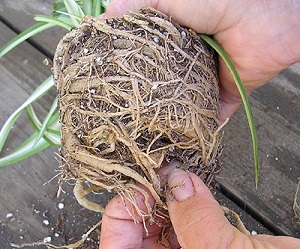
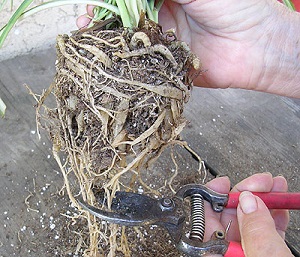
| |
3.
Put some potting mix into the new pot  | 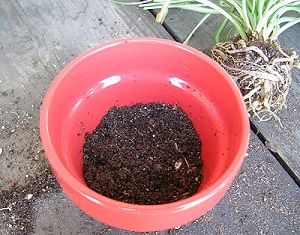 | 4.
Center the plant and plant it at a depth of ½ inch from the top of the pot  | 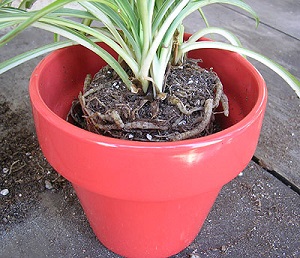 | Top
5.
Plant it no deeper than the top of the root ball. If you plant it too deep, it will rot, and too high, it will dry out.
If you plant it too deep, it will rot, and too high, it will dry out  | 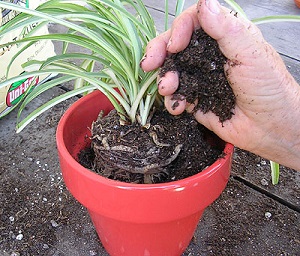 | 6.
Tamp the soil down as you work  | 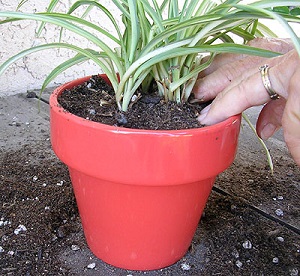 | 7.
Finish filling in  | 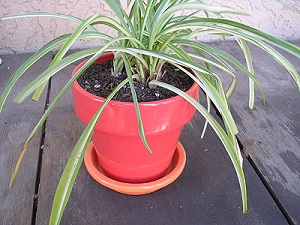 | 8.
Water in  | 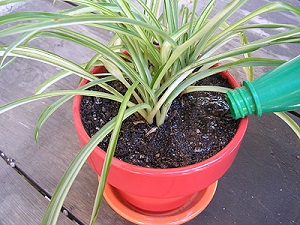 | 9.
Allow to stand for 30 minutes, and then empty any residue water from the saucer  | 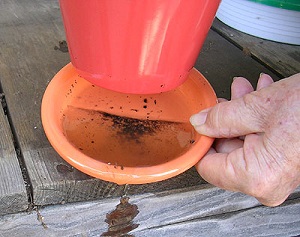 | 10.
In a few weeks, give it some fertilizer and you are done!  | 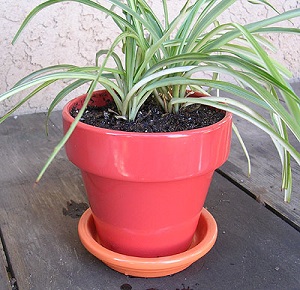 |
Back to
Planting and Growing Page
Top
|